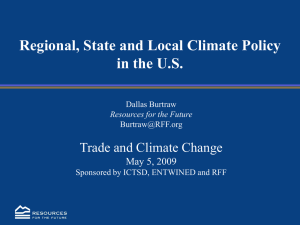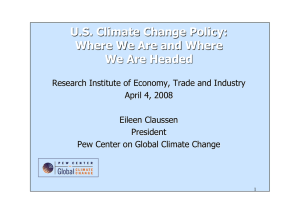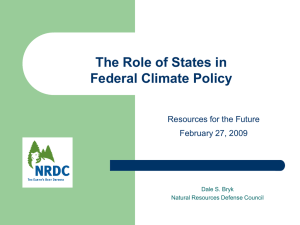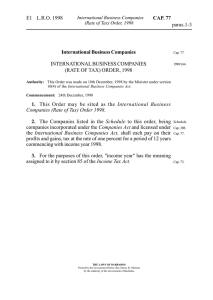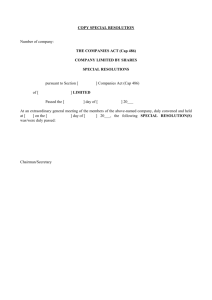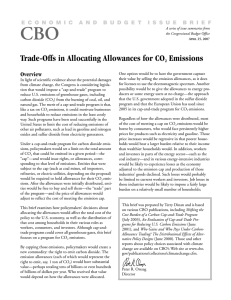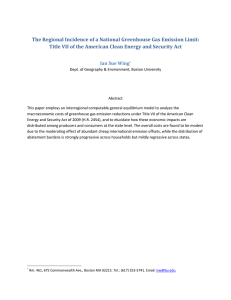Federalism in the Greenhouse: Defining a Role for States Franz Litz
advertisement
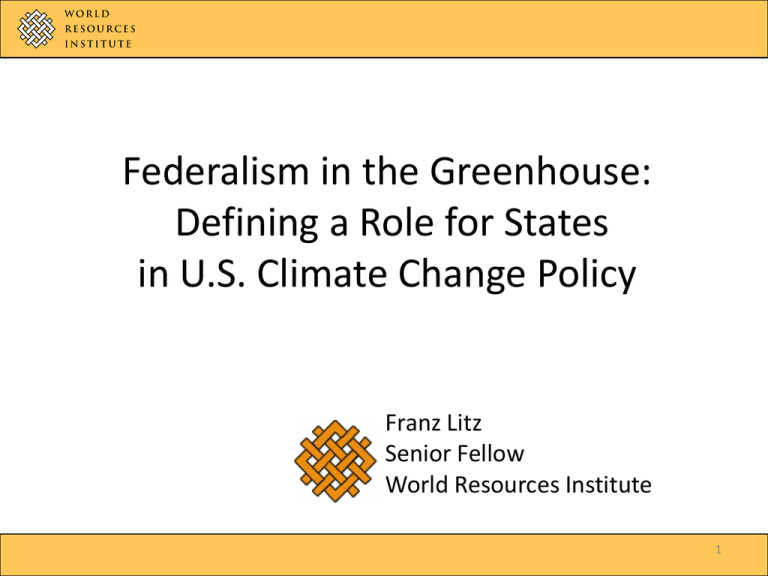
Federalism in the Greenhouse: Defining a Role for States in U.S. Climate Change Policy Franz Litz Senior Fellow World Resources Institute 1 Why Federal Action? Why State Action? • National Uniformity • Broader Coverage • Demonstrate leadership for International Negotiations • Local expertise in many areas where action is needed • Can address local challenges • Policy innovation • Drive Federal Action 2 Why Federal Action? • National Uniformity • Broader Coverage • Demonstrate leadership for International Negotiations Why a Partnership? • Substantial uniformity • Cover all 50 states • Preserve states’ ability to address local concerns, innovate & drive policy • Demonstrate leadership for international negotiations Why State Action? • Local expertise in many areas where action is needed • Can address local challenges • Policy innovation 3 Objective Create a more effective and efficient system for reducing emissions by allowing each level of government do what it does best. 4 U.S. Emissions (2005) Industrial, 18% Commercial, 4% Transportation, 39% Residential, 6% Electricity Generation, 33% Source: EIA for 2005 5 For Example: Transportation • The “three-legged stool”: – Reduce vehicle miles traveled through (a) public transit systems; (b) land use planning; (c) transitoriented development; etc. – Improve technology in vehicles through vehicle tailpipe standards, vehicle efficiency standards, smart transportation systems – Low carbon fuels through low carbon fuel standard, biofuel mandates 6 Across All Areas Where Action is Needed • Many areas of traditional state action • Many areas of state-federal partnership • Exceedingly rare to find an area where federal government completely preempts state action, choosing to act alone 7 Key Points • Given the broad array of policies that are climate change related, states’ role is assured • The language on states’ role in the federal bill is very important – Preemption can occur without express preemption – Preservation of state authority should be express (as in the Clean Air Act) 8 Federal Cap is a Ceiling and a Floor • Ceiling: Once a federal cap is in place, emissions in the covered sectors cannot exceed the federal cap. • Floor: Once a federal cap is in place, reductions in covered sectors cannot be greater than those required by the cap. • Sole option: the cap can be adjusted. 9 Cap has Implications for States • Reductions required in one state simply free up federal allowances to be “burned” in another state. • Unless the federal program provides some mechanism to take allowances out of the system to reflect additional reductions, states cannot achieve additional reductions in covered sectors. 10 Ways to Validate State Actions • Allocate federal allowances to states and allow the retirement of those allowances. • Create a federal set-aside. State (and local) actions that are additional result in retirement of allowances from set-aside. • Allow states to compel the retirement of federal allowances by covered sources in the state. 11 12 WORLD RESOURCES INSTITUTE Dialogue on State Roles in U.S. Climate Policy 13 33 States Engaged in Cap-and-Trade 23 States Actively Engaged; 10 States Observing Regional Greenhouse Gas Initiative (and observers) Western Climate Initiative (and observers) Midwest Cap-andTrade Accord (and observers) 14
